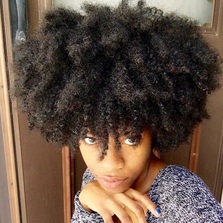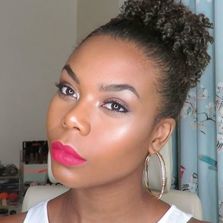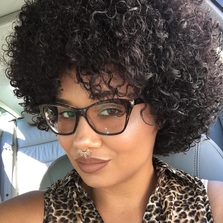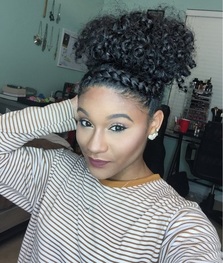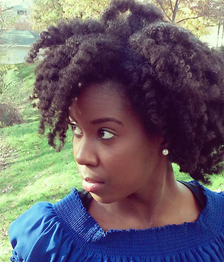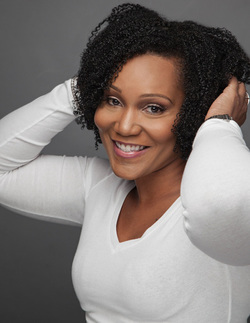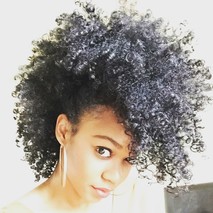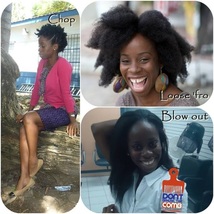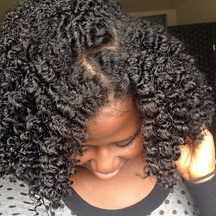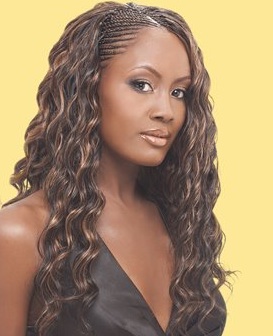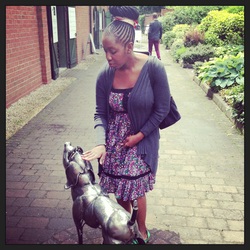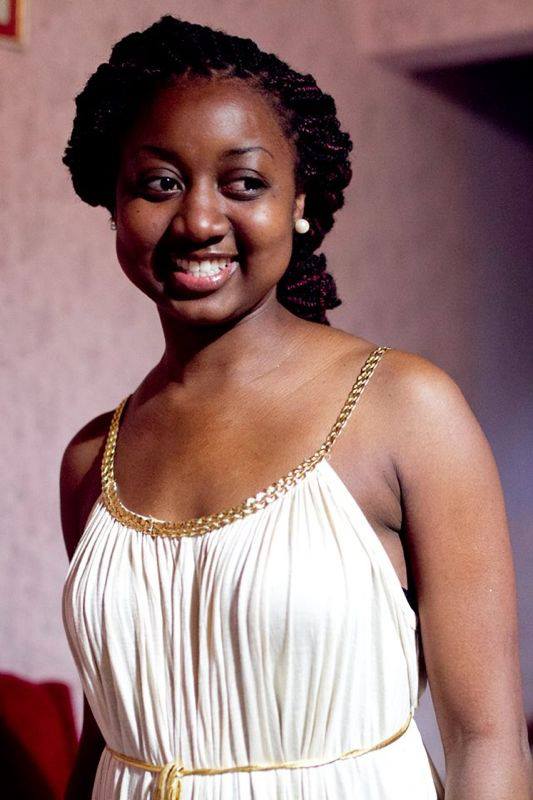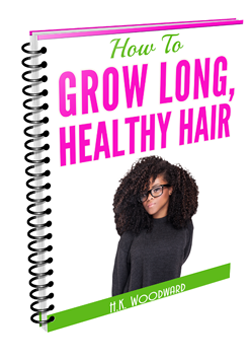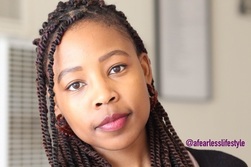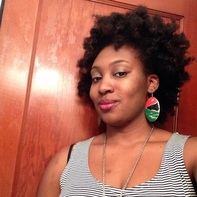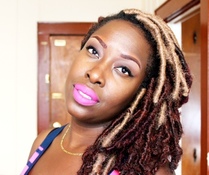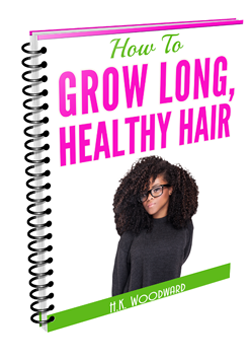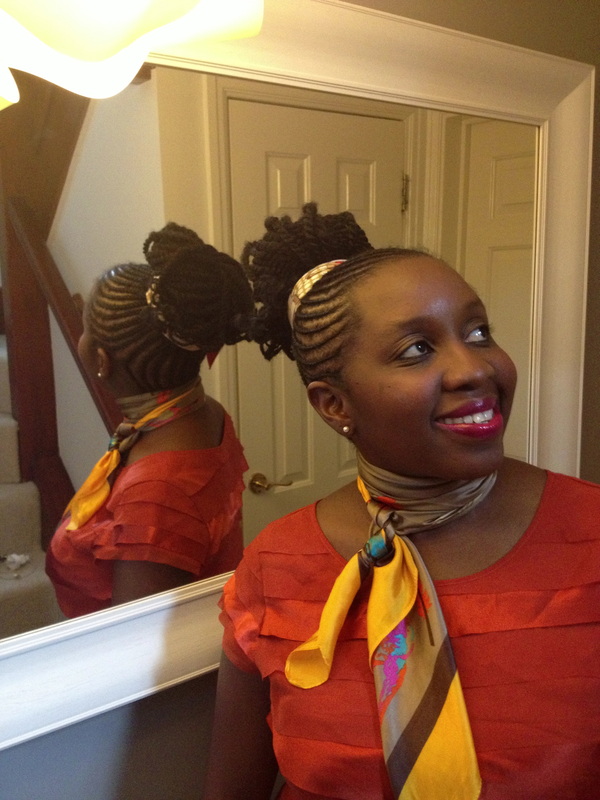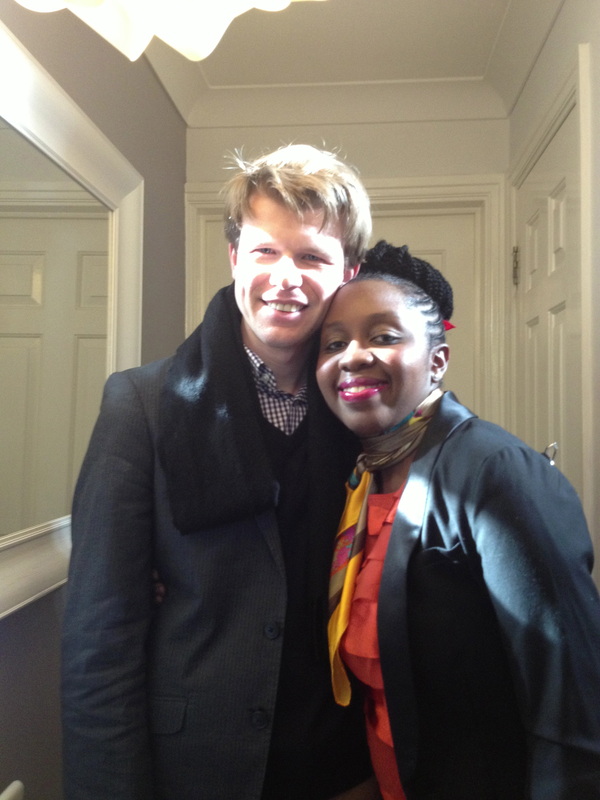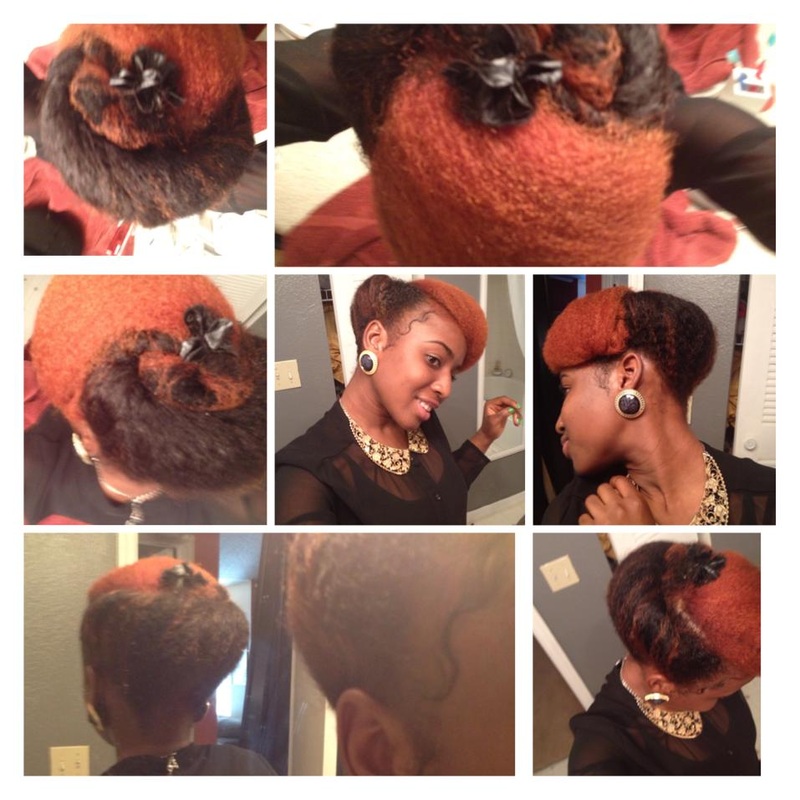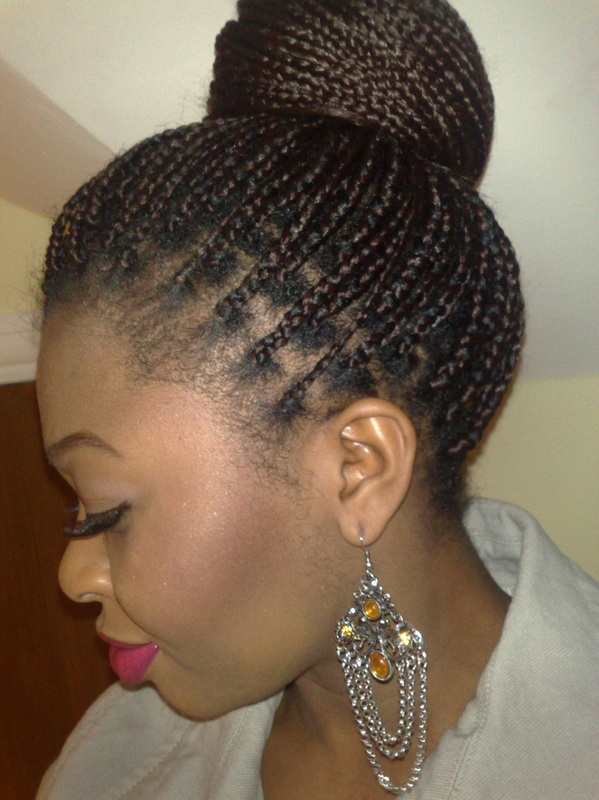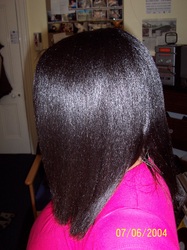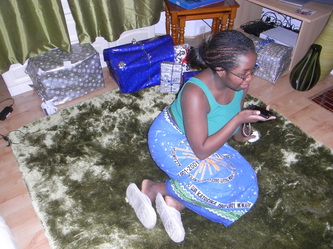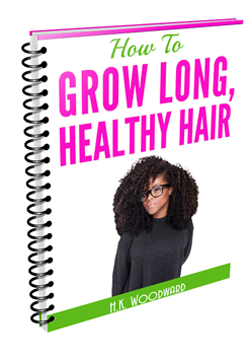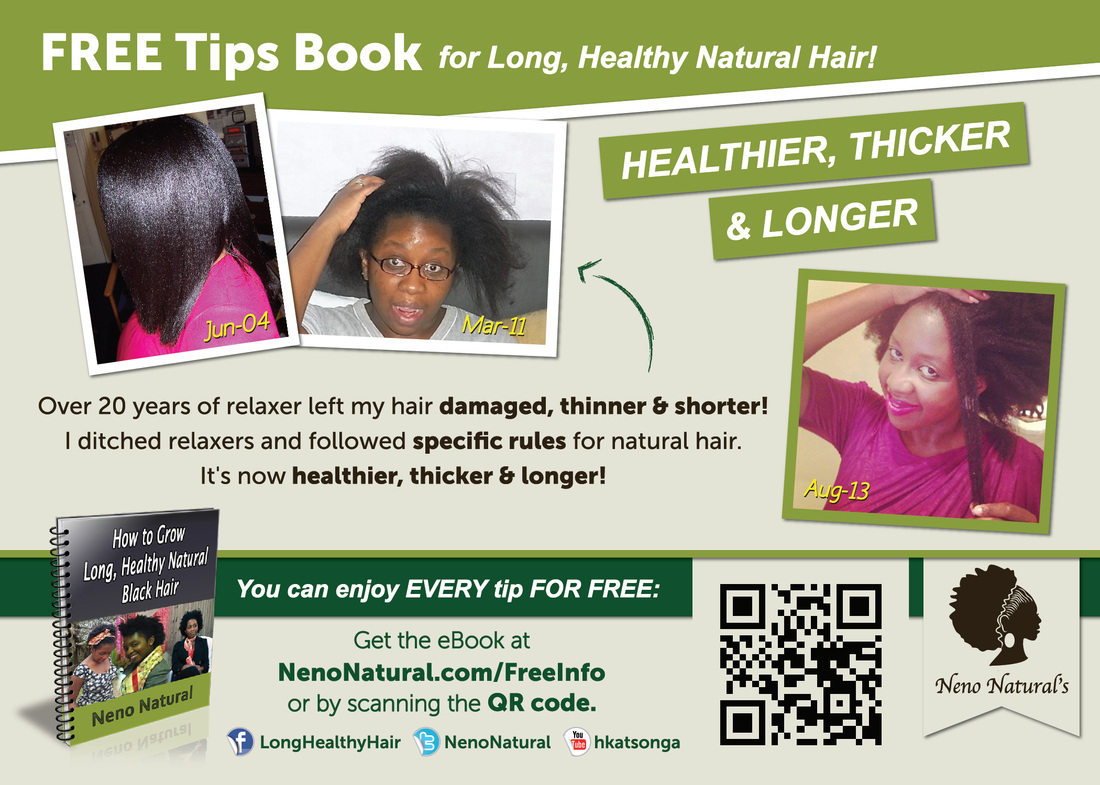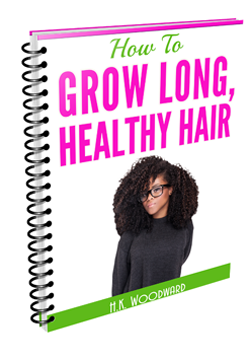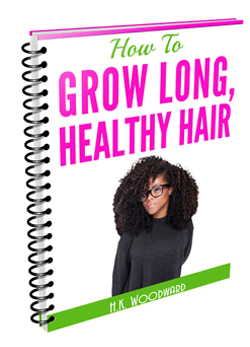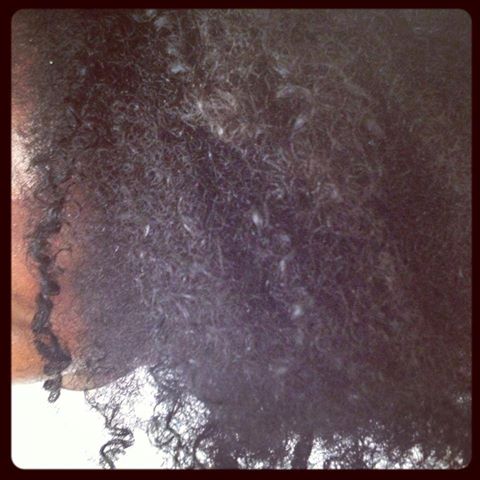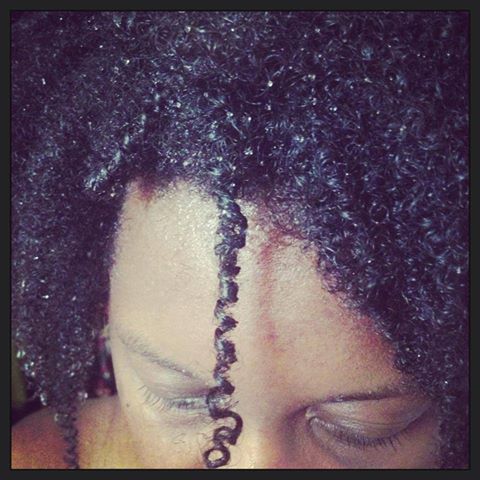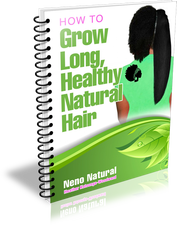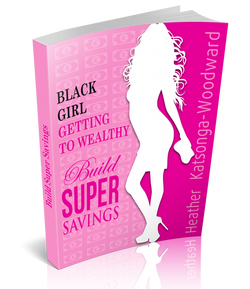
Firstly, why does your hair need any special care in the winter? Plain simply because it's cold and the cold has a tendency to dry hair out. Also, have you ever seen a leaf on a very cold day. It's brittle, I think my hair strands are much more vulnerable than leaves so I'll always spare them exposure to the cold.
So what are your options? 1. Throw a hat and scarf over your head when you go out This simply creates a barrier between the extremely cold weather outside and your temperature-sensitive hair. This is especially useful when your hair is too short to pin in or pin up. 2. Wear completely protective, low manipulation hair styles Completely protective hair styles keep the ends of your hair completely out of site. The best completely protective hair styles are:

This has two benefits:
a. You hair strands are stronger bound together than they are when they're "freely floating". Think about it this way, what's easier to break a single tooth pick or ten tooth picks bunched together. The same applies to your hair. b. The second benefit is that your hair get a break from being combed. Combing is great for detangling hair but it is also the biggest opportunity for breakage. 3. Wear completely protective hair styles You can obviously hide your hair without plaits by:
These are a good alternative to the completely protective, low manipulation hair styles. Remember, it's not just the weather you're protecting your hair from but also the central heating system; hiking the heating in your house up also dries out hair. Also, even outside of winter when it is raining or winding think "protective hairstyle". You might also like: Taking Care of Natural Hair Under A Weave or a Wig 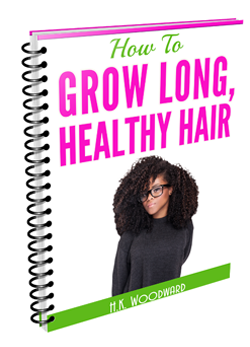
Get your FREE ebook on How To Grow Long, Healthy Natural Kinky or Curly Hair.
You've heard it said before, braids are a protective hair style and if you braid your hair it will grow better and faster.
That's true but only to a certain extent - if you don't braid your hair in the right way you will lose hair! When it comes to braids you need to keep the following things in mind: Braiding your hair will lead to breakage if:
To ensure your hair does grow when it is braided do the following:
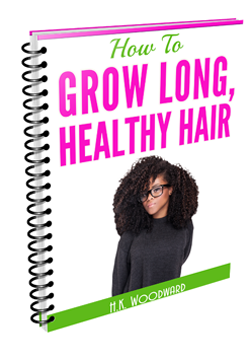
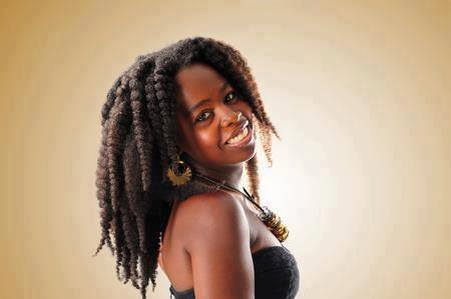
Yes and no.
Braids can be good for black hair if you follow the necessary precautions to ensure they're done when your hair is strongest and healthiest. I tackle the optimal conditions for braiding hair in: Hair Growth Tip 16 - Braids That Increase Natural Hair Growth If you don't take these precautions you will incur lots of unnecessary hair breakage and thinning edges from strain and general dryness. In addition, I should add that by mixing relaxed hair with braiding I damaged my own hair. I didn't know that it is best to choose one or the other. If you want to wear braids regularly it's best to stop relaxing hair altogether. You might also like: 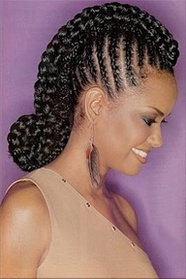
6 to 8 weeks on average and 12 weeks at the very most.
Besides looking messy if you keep plaits in for too long it's also very difficult to diagnose any hair problems if you have extensions. Hard water could be making your hair brittle or your hair fibres might not be getting enough moisture or protein. To see these issues you need to release your hair from the plaits. There are things you can do to ensure your hair is doing well as discussed in these two blogs:
Harry and I have a pregnancy photo shoot in a couple of weeks and I'm struggling to decide whether braids or an afro is best. What will look better in 30 years' time - braids or afro? Write a comment if you think something else completely.
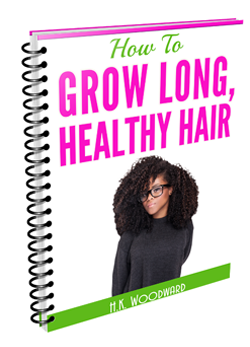
Get your FREE ebook on How To Grow Long, Healthy Natural Kinky or Curly Hair.
I was recently asked whether it was harmful to dye hair and then subsequently braid it.
The answer is YES. The reason is simple: When you have your hair dyed, the cuticle layer has to be lifted in order to let the dye in. The cuticle layer is then flattened again but the very act of lifting and flattening the layer weakens it. At times, the cuticle layer doesn't get re-flattened properly leading to hair damage. If you then go to braid your hair you're braiding hair who's protein infrastructure has been weakened. The likelihood of incurring hair breakage is therefore higher. When can you braid your hair again? I would say wait until about 6 weeks have passed or when you have about half an inch of new hair growth before you braid your hair. Your new growth won't have been dyed and will be stronger - the protein infrastructure will be intact. In addition, after a few deep conditions and hot oil treatments the color-treated hair will have been re-fortified and will therefore be more ready to hold a braid. Relaxing hair weakens hair more than dyeing natural hair. Have you braided your hair quite soon after dyeing it and faced a bad result due to that? 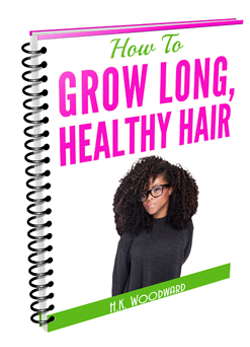
Get your FREE ebook on How To Grow Long, Healthy Natural Kinky or Curly Hair. You might also like: Is It Bad To Dye / Color Hair Then Get Extensions?
I wish I had known this earlier but mixing braiding and relaxer requires a delicate balancing act and if done wrongly will destroy your hair! See my pictures of me above!
Relaxed hair is even weaker than natural hair that's been dyed hair. How does relaxer work? When you have your hair relaxed, the cuticle layer has to be lifted in order to let the relaxer in in. The cuticle layer is then flattened again but the very act of lifting and flattening the layer weakens it. At times, the cuticle layer doesn't get re-flattened properly leading to a damaged strand of hair. Furthermore, not only is the cuticle layer lifted to let the relaxer in but the very bonds that give your hair its kinks, curls and coils are permanently changed further weakening each strand. If you then braid your hair you're braiding hair who's protein infrastructure has been compromised. The likelihood of incurring hair breakage is a lot higher than when you braid natural hair. Really, if you prefer to have relaxed hair you should avoid braids. Relaxed hair needs constant refortification with protein conditioners to keep it strong. If you braid your hair you're much more likely to forget to do this and to neglect the hair beneath. When can you braid your hair again if you really want to? I would say wait until two months have passed or when you have about an inch of new hair growth before you get extensions. Your new growth won't have been relaxed and will be stronger - the protein infrastructure will be intact. Have you mixed relaxer with braiding and had dire consequences as a result? Tell me, please!
Does your scalp get all itchy when you put on a weave?
This could be because you're sensitive to the alkaline base on the weave or other hair. Some people think they are allergic to weaves or to synthetic hair but frequently they are just allergic to the alkaline base designed to make synthetic hair more shiny or softer. The solution is to wash the hair before use. This is how: Ingredients:
Method:
For a video demo watch the below clip. Skip to 0.50 on the time line to skip the intro. 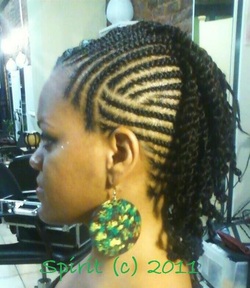 Protective styling is all about retaining more length and retaining hair moisture. There are three types of protective styles: 1. Completely protective styles Hide the ends of hair from view. Hair ends are the oldest segment of hair on your head and also the weakest. Hiding them from view can help to reduce breakage. When your hair is pulled together it's much less vulnerable. Think about it this way: is it easier to break one toothpick or ten bunched up together? The answer is the same for hair. 2. Low manipulation protective styles May have the ends exposed but they require little day-to-day hair handling. Handling such as combing, blow drying and styling hair is when breakage normally occurs. When my hair was short I could pull a comb through it with zero resistance. Nowadays tangling is such a big issue for me. Frequently with a twist/braid-out or a roller set you can go two or three days without having to restyle your hair thus giving it a break. 3. My favourite hairstyles are both completely protective and low manipulation. This category is also great when you are transitioning and still figuring out how to manage your natural hair. When your hair is plaited in some way it gets a proper break and you completely forget about whether or not it's "growing". Ideally, I want to spend most of next year in braids. My only worry is that I have to comb my hair properly to get it plaited and I don't usually do that; I enjoy far less breakage under a minimal comb regime. Finger combing only turned out to be a bad idea for me. EXAMPLES!
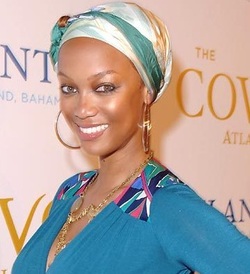 4. Hats and scarves This is a subcategory of completely protective styling. For most of 2011 my hair was too short to be pinned down so I wore hats and scarves over my head whenever I was outside. Seriously, I am so obsessed about my hair being covered that one day I walked out the house with it exposed my husband shouted "your hair's not covered" like I was about to drop a baby or something. I had to explain that my ends were hidden so it was okay to walk between the house and the car without a hat. In summary, the whole aim of protective styling is to reduce opportunities for breakage by keeping hair ends hidden and retaining more hair moisture. Opportunities for hair breakage increase when hair strands are dry and isolated, i.e. not tied up, when hair ends are exposed to environmental elements (sun, wind, cold) and when you're "handling" your hair. If you are trying to grow long hair consider using protective styling more often. Protective styles are especially helpful during winter, when it is very hot outside and when the central heating makes a room very dry. 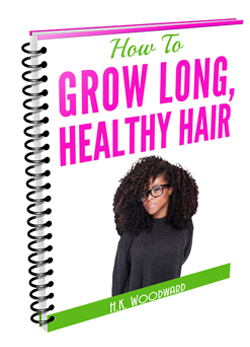 Get your FREE ebook on How To Grow Long, Healthy Natural Kinky or Curly Hair. 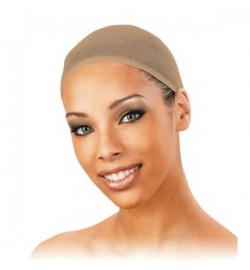 Cotton wig cap Cotton wig cap
It's pretty common knowledge now that cotton is more absorbent than satin or silk so you should sleep with a satin cap over your head.
So, could a cotton wig cap be damaging you hair? The quick answer: no, not likely. Cotton wig caps are okay if you are not sleeping in them. Cotton surfaces are worse to sleep on because the full weight of your head is on the cotton cap or surface and all the tossing and turning adds to the abrasion (rubbing) and drying out of hair. When you wear a wig cap during the day, however, your hair does not rub against the cap nearly as much. If your hair is in cornrows or flat twists that's even better because loose strands are much more vulnerable than hair that is bunched up together. So overall, you are okay to wear a wig cap. Protect your hair by flat twisting or corn rowing it before putting the cap on. |
I now blog about wealth creation - so if you have any money questions meet me there, you can do all sorts of cool things like leave me a voicemail.
By Heather Katsonga-Woodward
I was a natural hair blogger and mixtress living between London & Chicago from 2012 to 2017. I always thought I was 4C but some say 4B; images below - you decide! Heather xx Categories
All
Archives
November 2016
|

